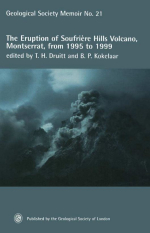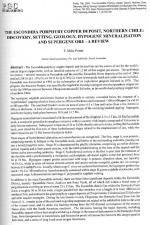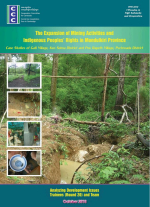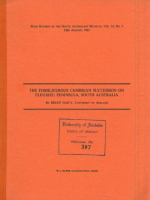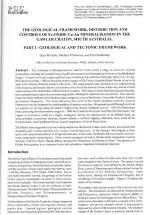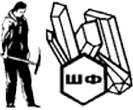Геологическая структура, распределение и контроль железооксидно-медно-золотой минерализации в кратоне Гоулер, Южная Австралия: Часть I - Геологическая и тектоническая структура
The Archaean to Mesoproterozoic Gawler Craton hosts a range of economic mineral commodities, including Au (central Craton), Ag-Pb-Zn (eastern Eyre Peninsula) and iron ore of the Middleback Ranges. A major iron-oxide copper-gold province containing the world class Olympic Dam Cu-U-Au-Ag-REE deposits extends ~ 500 km along the eastern margin of the Craton, from the Mount Woods Inlier in the north to the Moonta-Wallaroo district in the south. This paper presents new advances in our understanding of the structure, deformation history and tectonic evolution of the Gawler Craton, which may lead to a better understanding of the distribution of these mineral systems. The Craton is subdivided into tectonic domains, each encompassing an area of crust containing similar lithological and structural associations. New tectonic events have been defined within the three major orogenic cycles of the Gawler Craton (the Sleaford, Kimban and Kararan Orogenies). The recent discovery that much of the craton comprises relatively juvenile Proterozoic crust has improved our understanding of cratonic evolution. We propose growth through accretion in magmatic arc settings along the eastern margin of an arcuate Archaean core at ~ 1850 Ma (Donington Suite), and along the southwestern margin at ~ 1680 Ma (Tunkillia Suite) and 1620 Ma (St Peters Suite). We suggest an alternative model to a largely anorogenic setting for emplacement of the Hiltaba Suite, an intracontinental, extensional back-arc, located behind a northeast dipping subduction zone, south of the Nuyts Domain, which produced the arc-related magmatism of the St Peters Suite.
The Hiltaba Suite magmatic event was widespread across the Gawler Craton, and is broadly associated, both temporally and in places spatially with a major mineralising event. At the Olympic Dam deposit, a close spatial and temporal association is recognised between its host rock, the Roxby Downs Granite, and iron-oxide copper-gold mineralisation. Other mineral prospects related to Hiltaba Suite magmatism include Tarcoola, Tunkillia, Myall, Sheoak, Barns, and possibly Weednana, and Menninnie Dam. The presence of Hiltaba Suite granites is an important factor for exploration companies in tenement selection.



